|
|
|
|
|
|
|
|
|
|
|
|
|
|
|
|
|
|
|
|
|
|
|
|
|
|
|
|
|
|
|
|
|
|
|
|
|
|
|
|
|
|
|
|
|
|
|
|
|
|
|
|
|
|
|
|
|
|
|
|
Return
to Biology 1114 Index Pa
ge
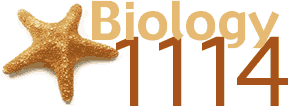
Preview
Material for Exam 4 - Spring 2005
Print
the PDF version (no pictures, better printing) |
|
|
|
|
|
|
|
|
|
|
|
|
|
|
|
|
|
|
|
|
|
|
|
|
The animals that we use as a source for meat differ in their efficiency
to convert plant foods such as grains to meat. The following table shows
the approximate amount of grain required to produce one pound of meat.
Species |
Amount of Grain (pounds) |
Cows |
17 |
Pigs |
10 |
Chickens |
4 |
|
|
|
|
|
|
|
|
|
|
|
|
|
|
|
|
|
|
|
|
|
|
|
|
|
|
|
|
|
|
|
|
|
|
|
|
|
|
|
|
|
|
|
|
|
|
|
|
|
|
|
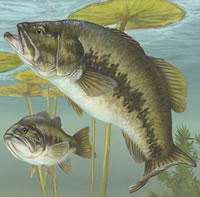 source source |
|
|
|
|
|
|
|
|
|
|
|
|
|
|
|
|
|
|
|
|
|
|
 source source |
|
|
|
|
|
|
|
|
|
|
|
|
|
|
|
|
|
|
|
|
|
|
|
|
Breeding,
male North American sunfish (e.g. bluegills or pygmy sunfish) are often brightly
colored. However, in largemouth bass (another species in the same family),
males and females look identical and, unlike other nest-tending sunfish, they
provide bi-parental care to the eggs and fry (young). Recently, scientists
used paternity testing to determine whether the eggs in each largemouth bass
nest were all full-siblings (same parents) or half-siblings (share only one
parent). |
|
|
|
|
|
|
|
|
|
|
|
|
|
|
|
|
|
|
|
|
|
|
|
|
|
|
|
|
|
|
|

source |
|
|
|
|
|
|
|
|
|
|
|
|
|
|
|
|
|
|
|
|
|
|
|
|
|
|
|
|
|
|
|
|
|
|
|
|
|
|
|
|
|
|
|
|
|
|
|
|
|
|
|
|
|
|
 source source |
|
|
|
|
|
|
|
|
|
|
The
Siberian Hamster is a rodent that is both a popular pet and research animal.
They produce and respond to Leptin like mice. Unlike laboratory mice, these
animals live in very cold and dry climates and hibernate in winter. Animals
prepare to hibernate as day-time hours decrease. A mutant hamster was found
that weighed three times what normal hamsters weigh. The scientists named
the mutant “sumo”. When any sumo is crossed with a normal hamster,
all of their offspring were normal. When injected with Leptin, the sumo mutants
are affected as follows:
|
Sumo Hamster + water (placebo) |
Sumo Hamster + Leptin |
Weight |
300 g |
125 g |
In another study using normal hamsters, scientists altered the number of
hours of daylight and measured the Leptin produced by the hamsters. The results
were:
| Characteristic |
Group A |
Group B |
| Photoperiod (hours with lights on:off) |
16:8 |
8:16 |
| Average Weight |
117g |
100g |
| Leptin Level (ng/ml) |
20 |
8 |
|
|
|
|
|
|
|
|
|
|
|
|
|
|
|
|
|
|
|
|
|
|
|
|
|
|
|
|
|
|
|
 |
|
|
|
|
|
|
|
|
|
|
|
|
|
|
|
|
|
|
|
|
The
length of the nephron loops lets the hamster’s kidney concentrate the
solution (ions) in the area surrounding the collecting ducts (B). The ion concentration
outside of the nephron loop in the area above B in the figure is greater than
that in the loop itself, yet the nephron loop continues to add ions (Na+, Cl-)
to that area. |
|
|
|
|
|
|
|
|
|
|
|
|
|
|
|
|
|
|
|
|
|
|
|
|
|
|
Large
numbers of people in San Diego rush to hospital emergency rooms complaining
of gastrointestinal flu-like symptoms that have persisted for several days.
Infants, the elderly, and the immunosuppressed are more severely affected.
Public health researchers gather information to determine the source of this
illness: Cryptosporidium parva. Cryptosporidium is an intestinal
protozoan parasite of mammals that is transmitted through fecal contamination.
Because
there is no effective drug to eliminate the parasite, patients are treated
for their symptoms and some of the most severely affected die. Most of the
people with the parasite are from a district of the city that draws its water
from the same source: an older, secondary water treatment plant located downstream
from a feedlot that stores livestock wastes in a lagoon near the river. The
researchers test for coliforms (intestinal bacteria), at several locations
along the river from the feedlot to the water treatment plant, and find the
highest concentrations at the sites adjacent to the feedlot.The water down the
river from the water treatment plant is very turbid (cloudy), especially after
several bright sunny days |
|
|
|
|
|
|
|
|
|
|
|
|
|
|
|
|
|
|
|
|
|
|
|
|
|
|
 source source |
|
|
|
|
|
|
|
|
|
|
|
|
|
|
|
|
|
|
|
|
|
|
|
|
|
|
|
|
|
|
|
|
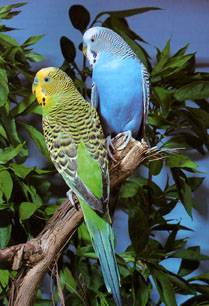
source |
|
|
|
|
|
|
|
|
|
|
|
|
|
|
|
|
|
|
Budgerigars
(“budgies”) are small parakeets that occur in flocks in the Australian
Outback but are also popular as pets. Wild budgerigars are green and yellow;
bird breeders also raise budgies with a mutant plumage that is primarily sky
blue in color. |
|
|
|
|
|
|
|
|
|
|
|
|
|
|
|
|
|
|
|
|
|
|
|
|
|
|
|
|
|
|
|
|
|
|
|
|
|
|
|
 source source |
|
|
|
|
|
|
|
|
|
|
|
|
|
|
|
|
|
|
|
|
|
|
|
|
|
|
|
|
|
|
|
|
|
|
|
|
|
|
|
|
|
|
|
|
|
 source source |
|
|
|
|
|
|
|
|
|
|
|
|
|
|
|
|
|
|
The
Greater Honeyguide is an unusual African bird that feeds almost exclusively
on the eggs, larvae, honey, and wax of beehives. Symbiotic bacteria in the
guts of honeyguides allow them to obtain nutrition from beeswax, and the birds
can subsist for long periods eating nothing but wax. Honeyguides usually cannot
break into beehives on their own, and have evolved display behaviors that lead
larger animals to beehives. For thousands of years, humans in search of honey
have been the mammals that break into hives they are led to by the honeyguides,
but the original target of the honeyguides was likely the “honey badger,” a
medium-sized carnivore that eats almost anything, but especially loves bee
larvae. When a honey badger rips into a hive with its strong claws (or a human
does likewise with a knife), it endures a few stings for a quick meal of larvae
and honey. The honeyguide then feasts on bee larvae and beeswax, neither of
which it could access by itself because it is unable to break into the hive
on its own. As another wrinkle in this story, honeyguides are brood parasites – they
lay their eggs in the nests of other birds. |
|
|
|
|
|
|
|
|
|
|
|
|
|
|
|
|
|
|
|
|
|
|
|
|
|
|
|
|
|
|
|
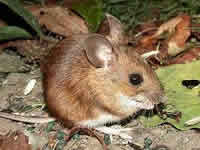 source source
|
|
|
|
|
|
|
|
|
|
|
|
|
|
|
|
|
|
|
|
|
|
|
|
|
|
|
|
|
|
|
|
|
|
|
|
|
|
|
|
|
|
|
|
|
|
|
|
|
|
|
|
|
|
|
|
|
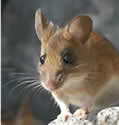
source |
|
|
|
|
|
|
|
|
|
|
|
|
|
|
|
|
|
|
|
|
|
|
|
|
|
|
|
The
woodmouse (Apodemus sylvaticus) and yellow-necked fieldmouse (Apodemus
flavicollis)
are distinct species found together in many areas of Europe. They are very
difficult to tell apart based on appearance. |
|
|
|
|
|
|
|
|
|
|
|
|
|
|
|
|
 |
 |
 |
 |
 |
 |
 |
 |
 |
 |
 |
 |
 |
 |
 |
 |
 |
 |
 |
 |
 |
 |
 |
 |
 |
 |
 |
 |
 |
 |
 |
 |
 |
 |
 |
 |
 |
 |
 |
 |
 |
 |
 |
 |
 |
 |
 |

 source
source source
source
 source
source
 source
source
 source
source source
source
 source
source